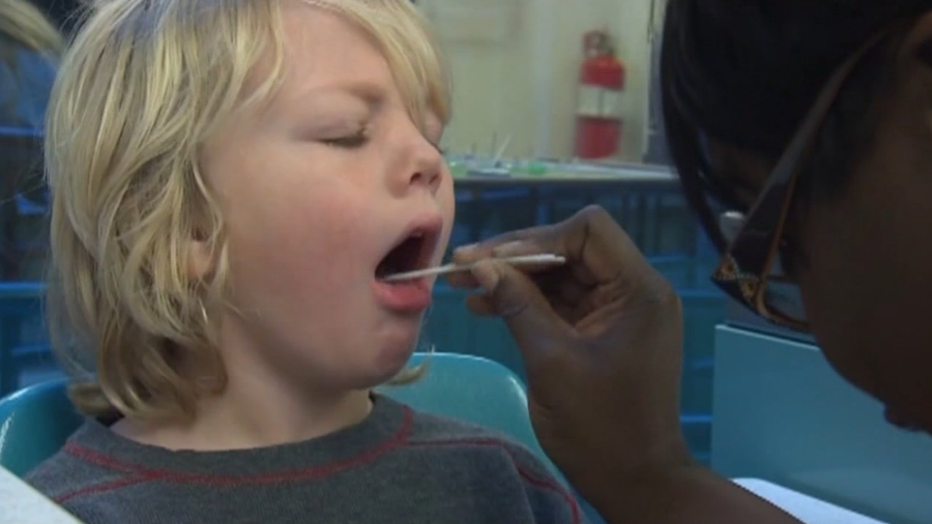Invasive strep cases being monitored by Austin Public Health
Austin Public Health monitors cases of invasive strep
According to the U.S. Centers for Disease Control, cases of iGAS began peaking earlier than normal last fall, and have remained unusually high in children in some parts of the country.
AUSTIN, Texas - Cases of invasive strep are spiking in states across the country. In Austin, public health officials say they’re keeping a close eye on it.
"It was the worst I've ever felt in my life," said Margo Stover, who contracted invasive strep.
Stover feels lucky to be visiting Austin with her family this week, after coming down with invasive group A strep (iGAS) back home in Kentucky.
"I actually had to be hospitalized because I was so dehydrated because I couldn't swallow anything. And they had to put me on steroids and some other medication to try to contain it," said Stover.
Her daughter, 11-year-old Scarlett, got it as well, days after suffering through regular strep.
"Well, it was rough because I couldn't really do anything. It was hard for me to swallow everything," said Scarlett Stover.
According to the U.S. Centers for Disease Control, cases of iGAS began peaking earlier than normal last fall, and have remained unusually high in children in some parts of the country. Some spots have also seen an increase in people 65 and older.
"Invasive group strep infections are life-threatening. They're limb-threatening. They're that level of importance," said Dr. Brian Metzger, Medical Director of Infectious Diseases at St. David’s Healthcare.
Austin Public Health says it’s closely monitoring cases in our area.
"We're not seeing an increase in invasive strep at this time. But again, we're being vigilant and working and staying in touch with our health care partners," said Dr. Desmar Walkes, Medical Director for Austin Public Health.
Invasive strep is caused by the same bacteria as normal strep, except aside from a bad sore throat, it affects other parts of the body like the bloodstream and muscle tissue.

Cases of invasive strep are spiking in states across the country. In Austin, public health officials say they’re keeping a close eye on it.
"Most of them have low blood pressure. You’ll have a racing heart rate," said Metzger.
Symptoms include fever, chills and muscle aches, and it can lead to a flesh-eating disease called necrotizing fasciitis, septic shock, even death. Invasive strep often requires IV antibiotics for treatment.
"Patients typically end up in the emergency department," said Metzger. "It's very important for early recognition and seeking medical attention for that."
Some people FOX 7 spoke with in downtown Austin say they weren’t even aware of invasive strep. Others say they’re not too concerned.
"Nothing that I am concerned about whatsoever," said Brian Green. "Hopefully our immune system is up to par, and it will do its job," said Green.
But for the Stovers, who lived through it, they urge others to pay attention to their bodies.
"Just watch out for things that seem odd," said Margo Stover’s husband Jason.
"Go to the doctor and get on antibiotics as soon as possible," said Margo Stover.
Invasive strep can have many of the same symptoms as the flu, but, unlike flu, symptoms tend to get worse over time, not better.
In the meantime, experts say it’s a good idea to practice good hygiene, and, if you’re feeling off, call your doctor right away.
While there is no vaccine for strep, experts say getting your flu and shingles shots can actually reduce your risk for getting invasive strep.

